Media | Articles
How the unlikely Chevy SSR retro pickup made it to reality
Y2K was special year for General Motors Design. Following some ho-hum concept vehicles in 1999, GM Design vice president Wayne Cherry delivered a dozen stunners for 2000. There was one concept each for Cadillac (Imaj), Buick (LaCrosse), Oldsmobile (Profile), Pontiac (Piranha), Saturn (CV1) and GMC (Terradyne), three for Chevrolet (Triax, Traverse, and SSR), a Zafira Snowtrekker from Opel, the humongous Hummer H2 SUV, and GM Advanced Technology Vehicles’ “80-mpg” Precept prototype. The latter two, ironically, were positioned across from each other in the entrance to GM’s massive new Detroit North American International Auto Show display.
All 12 concepts were good. Some great, even. But one stood out: the retro-hotrod Chevy SSR convertible pickup. This so-called Super Sport Roadster, hunched low on aggressive five-spoke alloys and fat performance tires under wildly flared fenders, was powered by a 6.0-liter high-output Corvette V-8. Its sleek, muscular looks promised driving dynamics more akin to a sports car than a truck.
The press and public loved it. However, the question of whether it could be produced and sold at an affordable price as a Chevy truck “halo” vehicle remained. “After we put it in the Detroit show in January,” said then-GM CEO Rick Wagoner, “and it got a great buzz, I sensed that it would be a real struggle to figure out how in the world they could get this vehicle done.”
The design

This idea had been in Cherry’s head for a while. “For years, Chevrolet has enjoyed a long and proud tradition of trucks,” he wrote for the foreword of yours truly’s Automobile Quarterly book, SSR, An American Original. “I believed there was an opportunity to build upon that legacy in a new way. My vision was to create a modern interpretation of the early 1950s classic pickup that has become the quintessential choice for street-rod custom trucks.”
Cherry had set up a specialized SpeedVision studio, GM’s first to use computers instead of drawing boards to develop new designs, then evolved it into a Corporate Brand Center (CBC) under executive designer Ed Welburn. And it was May 26, 1999 when he popped into Welburn’s daily 7:30 a.m. meeting with the assignment that would lead to the SSR.
Marketplace
Buy and sell classics with confidence
“I’ll never forget that day, when Wayne came into our war room and talked to us about doing this type of vehicle,” Welburn later recalled. The challenge was to create a vehicle “that embodies a modern interpretation of the classic American pickup truck.”
“It was May 31, 1999, when Wayne invited me to sit between him and Ed to hear his ideas” recalls Brian Baker, who was managing Welburn’s CBC studio at the time. As was my practice, I sketched during the discussion and showed my first impression to them as the meeting ended. They gave us the green light to start sketching.”
Moving very quickly, the studio developed multiple themes. Would it be “slammed” and lowered or sit up high like an early ’50s truck? What about the roof? A slammed design with a curved low roof and large, flared fenders—developed by Doug Mac—soon became the top candidate.
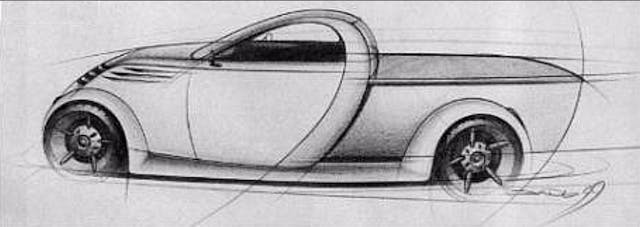
“We had no clay models in this digital studio,” Baker relates. “We relied on digital math models, projected them on a massive screen in our Virtual Reality Room and viewed them through 3D goggles. And we brought in ASC, and later Karman from Germany, to figure out what became a two-piece retractable hard top that would not take up cargo space.”
When the studio earned approval to fabricate full-size foam models, no one in the Detroit area had capacity to make them because of other commitments for the 2000 Detroit Show, so they contracted Metalcrafters in California to build them. “Glen Durmisevich smoothed Dave Schick’s digital surfaces for a terrific-looking model,” Baker continues. “Huge chrome tailpipes and high-mounted ‘hot rod’ mirrors completed the ‘California billet’ look.”
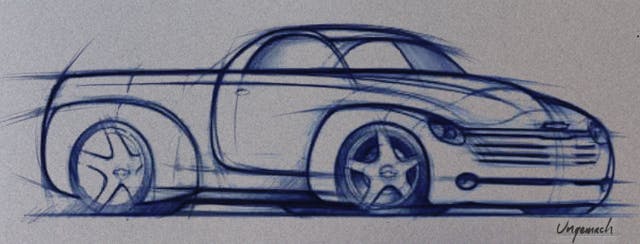
Finished in jet black, the SSR model was an instant hit when it rolled into GM Design Staff in Warren Michigan. “In my 25 years at GM, I never saw the shop team embrace a project with so much enthusiasm,” Baker says. “Fabricating the body required daily visits by Ed and myself to work out the design details as the shops worked three shifts to complete it. I worked with Andre Hudson to realize a double-binnacle interior featuring two large-dial instruments like in ‘48–‘53 Chevy trucks. We added the integral “roll bars” behind the headrests, and the Corvette body color ‘waterfall’ between the seats gave it a vintage Chevy flavor.”
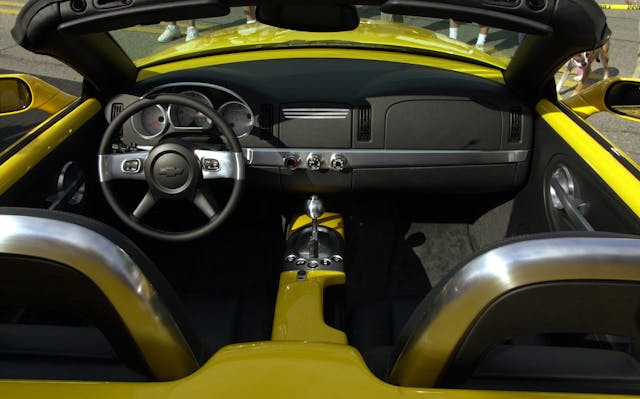
Not everything they hoped for made it to production. They wanted it on a low-riding Cadillac sedan chassis, but it ended up taller and some 10 percent bigger than the concept on a shortened GMT370 Trailblazer frame. “Still, Bill Davis and Glen Durmisevich did a great job of keeping the religion of the concept as they productionized it,” Baker enthuses.
“As I look back,” Cherry recalled in the book’s foreword, “the story of the birth of the Chevy SSR is remarkable. [It] inspired a small, dedicated team of designers, sculptures, engineers, and expert craftsmen to work tirelessly and passionately to create a true original.”
Cruising toward production
In a North American Strategy Board (NASB) new-product review in September of 1999, the “slammer” model was saved for last. And when they pulled the cover off, the group was stunned: “This was the top leadership of the company,” Welburn related, “and they were very excited. We also had a monitor setup with a simple animation. It rotated, then the top went down, and that really got them going. They asked, ‘can we do this for the Detroit show?’
Cherry and Welburn exchanged looks. They had not engineered it at all nor even thought about building it for Detroit. “Sure,” Cherry said. “Yes … we can.” The program had moved from initial sketches to two full-size foam models in an incredible seven weeks, all done in a digital environment with no clay models. Now they had just three months to build a real running concept with a working retractable hardtop.
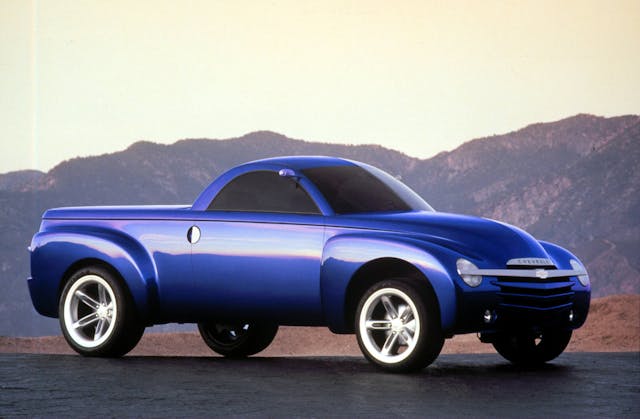
Technical Staffs and Truck Engineering group executive Tom Davis and then-Chevrolet General Manager Kurt Ritter put together a team that would work long and hard to find a way to get it done. “We told Engineering to get with Design Staff and figure out how we could do this on an existing chassis and Manufacturing to figure out how we could build it somewhere in the company,” Davis recalled. “This was going to be a home run. The issue was how can we do it at a cost target and a price level that makes sense.”
The primary arguments against it were budget and resource allocation. With so many critically important volume products needing to get designed, engineered, and built at that time, did GM really want to invest substantial work and money into such a low-volume niche vehicle? A low-volume product requires about as much investment as any other and takes its share of both away from higher-volume, more profitable products.
Designers Bill Davis (no relation to Tom) and Glenn Durmisevich were assigned to work with GM Portfolio Development Center (PDC) on the production design using as many existing carryover parts as possible. While the concept was quickly built on an S-10 compact pickup platform, the production proposal was to use the soon-to-come GMT 360/370 Chevy Trailblazer midsize SUV architecture, and the stretched three-row GMT370 version would provide sufficient room and structure for a V-8 engine and a larger 25-gallon gas tank.
Wagoner’s surprise
It was August 9, 2000, at the Traverse City, Michigan, Center for Automotive Research Management Briefing Seminars—just seven months after the SSR concept truck had wowed the crowds at the January Detroit auto show—when Wagoner announced a major surprise. He told the media and industry audience that GM would build the SSR beginning in late 2002. “I had the chance to demonstrate, in a very tangible way, that General Motors was changing the way we do business,” he said.
A few days later, he and Ritter proudly paraded the purple/blue concept SSR in the Woodward Dream Cruise—the annual auto orgy that lines suburban Detroit’s famous Woodward Ave. with hundreds of thousands of enthusiasts ogling a mind-blowing variety of collector cars and trucks cruising by. That was a bold move considering that the business case—the plan projecting how many would be built on what platform at what plant with what content and componentry to be sold at what price—was far from compelling or complete. “I had a high degree of confidence,” he said. The pressure was on. GM had to build the SSR.
On September 5, NASB reviewed results of a 14-week production study and approved continuation of the program and selection of ASC as the primary outside partner. But while building the concept SSR on an S-10 chassis had been relatively easy, developing the production design on the GMT 360/370 midsize SUV platform was a major challenge.

The first clay model was built around a projected 70 percent carryover parts, but to meet crash requirements and with that much carryover content, it had grown longer, wider, and taller. In the transition it had lost the concept’s pleasing proportions. Everyone soon realized that this modified design wasn’t working, and some say it nearly killed the program.
So, working in a small ASC studio across from GM’s Warren Tech Center, the combined team embarked on a different approach. “We still started with the 360/370 chassis,” ASC Creative Services president Mark Trostle said, “but took it to another level with a new floor pan, a new cowl, and all-new sheet metal. And we had to stretch the front overhang about four inches to work around the chassis components and for crashworthiness.”
“Once we were working around the engineering criteria with the full-size clay,” Welburn related, “We spent a lot of time developing the surfaces and finessing them. I think the show vehicle was a knockout, but the production vehicle was even better, which is unusual.”
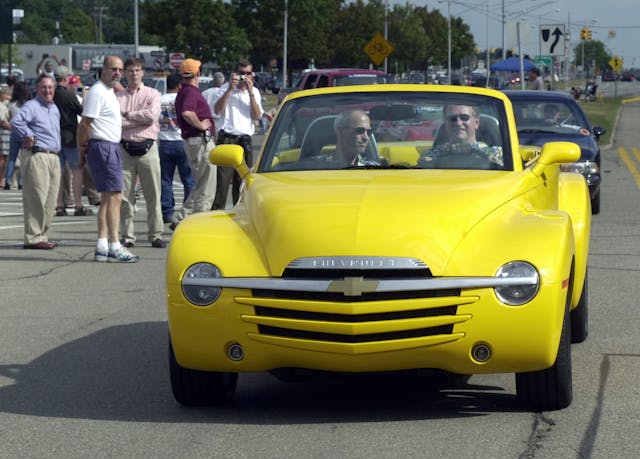
The build team worked with Visioneering Technologies on the retractable hardtop design, and it was demonstrated and approved on October 15. Operating through two separate mechanisms, it folded, retracted and stored vertically between the cabin and the bed, exactly like the animation that had so excited the NASB.
And when Wagoner drove a yellow production-intent version in the 2001 Woodward Cruise, a spectator yelled to him, “It’s a great truck, but you’ll never build it!”
“Oh, yes, we will,” he yelled back. “You just wait.”
Hitting the street
In January 2001, then-GM Manufacturing VP Gary Cowger announced that the SSR would be built in the small, specialized Craft Centre plant in Lansing because of its “proven history of producing high-quality, low-volume niche vehicles such as the Buick Reatta, EV1, and Cadillac Eldorado.” Among the many challenges was the widely flared steel fenders, which required a specially developed stamping process to achieve a huge 18 inches of “draw” for the fronts and 10 inches for the rears. The first salable SSR rolled out on July 29, 2003.
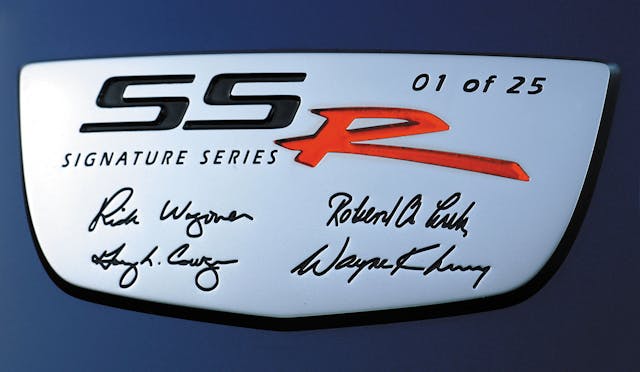
One interesting sidebar is the 25 early special-build Ultra-Violet Signature Series SSRs (VINs #0001-0025) that were autographed by GM executives, designers, engineers and builders then sent through a series of celebrities and events to build collector desirability and value, then sent to auction with autographs, photos, news clippings and other memorabilia documenting their unique journeys in special scrapbooks inside metal pedigree boxes. Another is the specially prepared SSR that paced the 87th Indianapolis 500 on May 25, 2003, preceded by a media reveal of all 25 Signature Series SSRs in which reporters enjoyed the opportunity to cruise around the Indianapolis track with IndyCar drivers.
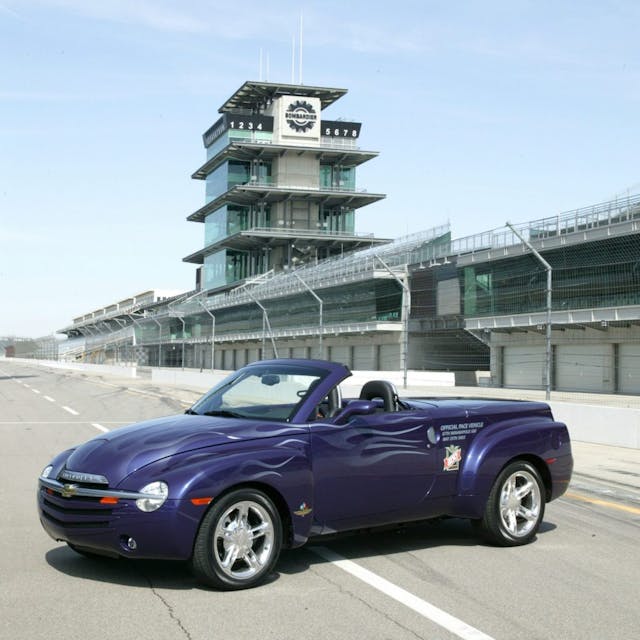
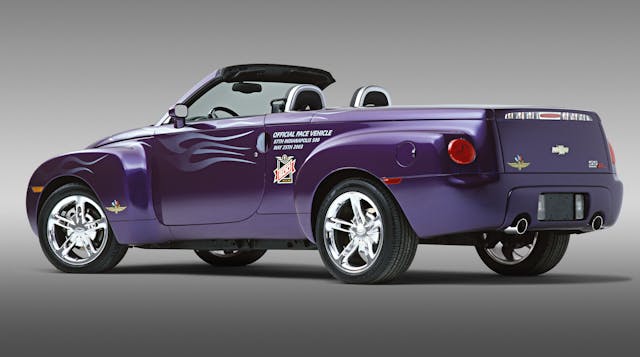
When this author had the opportunity to tailgate at a Michigan State football game in a borrowed SSR that fall, everyone from players to cheerleaders to aging alums stopped by to ogle it. Even though SSRs were being built just a few miles away in the Lansing Craft Centre, most had never seen or heard of it. We spent most of that day before and after the game answering questions and demonstrating its very cool and complex retractable roof.
Reports vary on how many SSRs were built and sold between its mid-2003 launch and its mid-2006 cancellation, but this hot-looking retro pickup proved a sales disappointment. Just 1664 were sold in calendar year 2003, 9648 in 2004, 8107 in 2005, 3803 in 2006, 244 in 2007, and the final 13 in 2008. That adds up to 23,479, though some sources contend that total production was 24,150, of which 24,112 were available to the public. (Counting the 25 Signature Series trucks makes that 24,137.)

Why did this super-cool pickup fail in the market? On the positive side, its retro-hotrod looks, rumbling exhaust, and surprisingly athletic handling made it a smile-inducing cruiser—especially with the top down. We owned and enjoyed one for a while and saw it as a big, head-turning, two-seat sportster with a giant trunk. But it was too big, too heavy and too pricey at north of $42,000. Plus, it was not as quick as expected due to the 300-hp 5.3-liter GM truck V-8 and four-speed automatic transmission it inherited from its Trailblazer cousin. While it was never intended to rival Chevy’s Corvette, it did get the Corvette’s 390-hp 6.0-liter V-8 and an optional six-speed manual for 2005 and 2006, lowering its 0-60 times from 7.7 to 5.3 seconds. By then it came two years too late.
Still, the SSR looks distinctive and is fun to drive, and it is certainly evocative of a particular imaginative moment in early-2000s retro design.






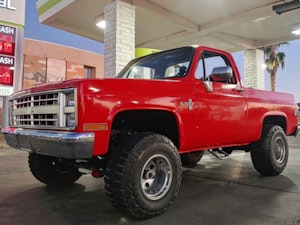


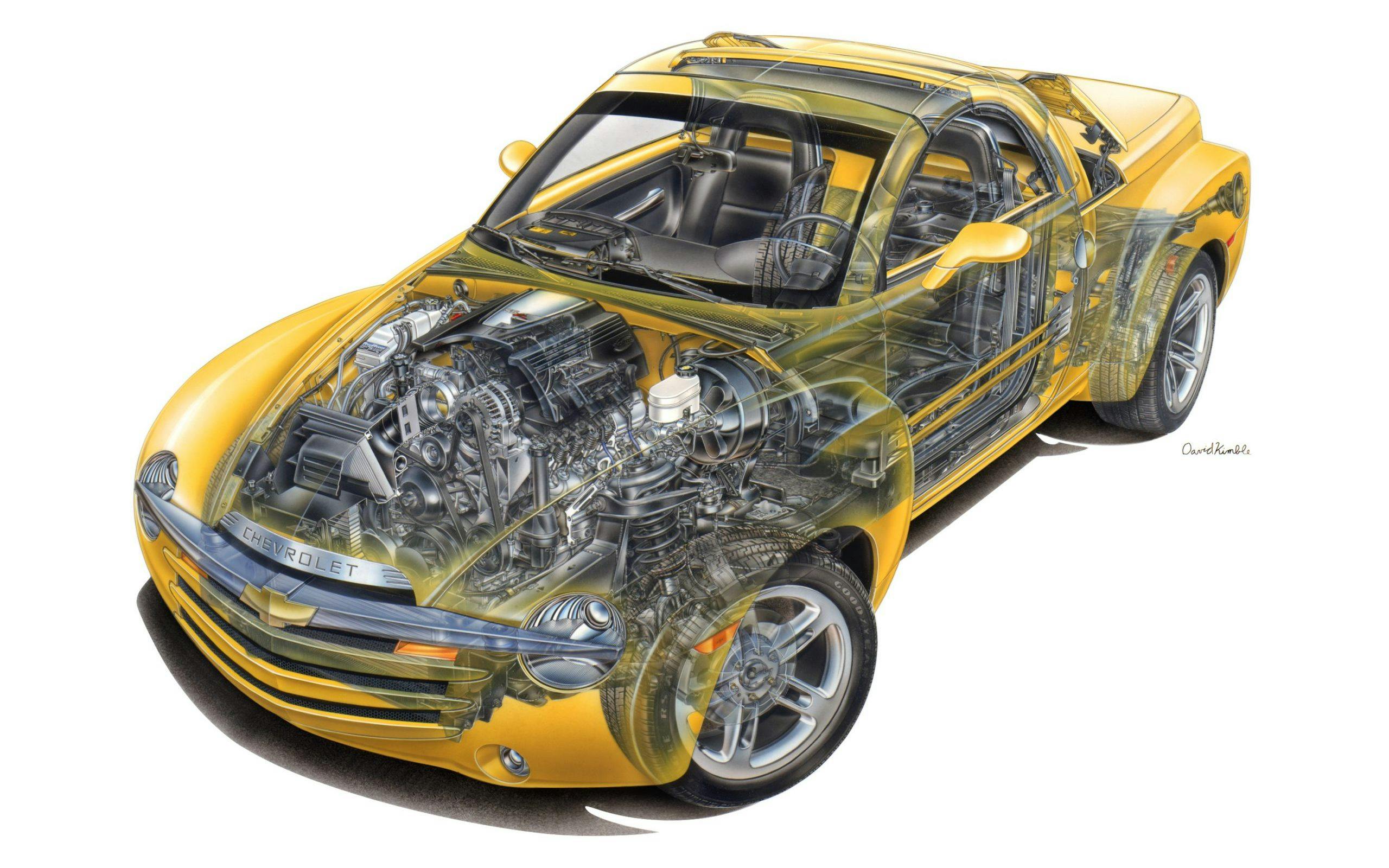
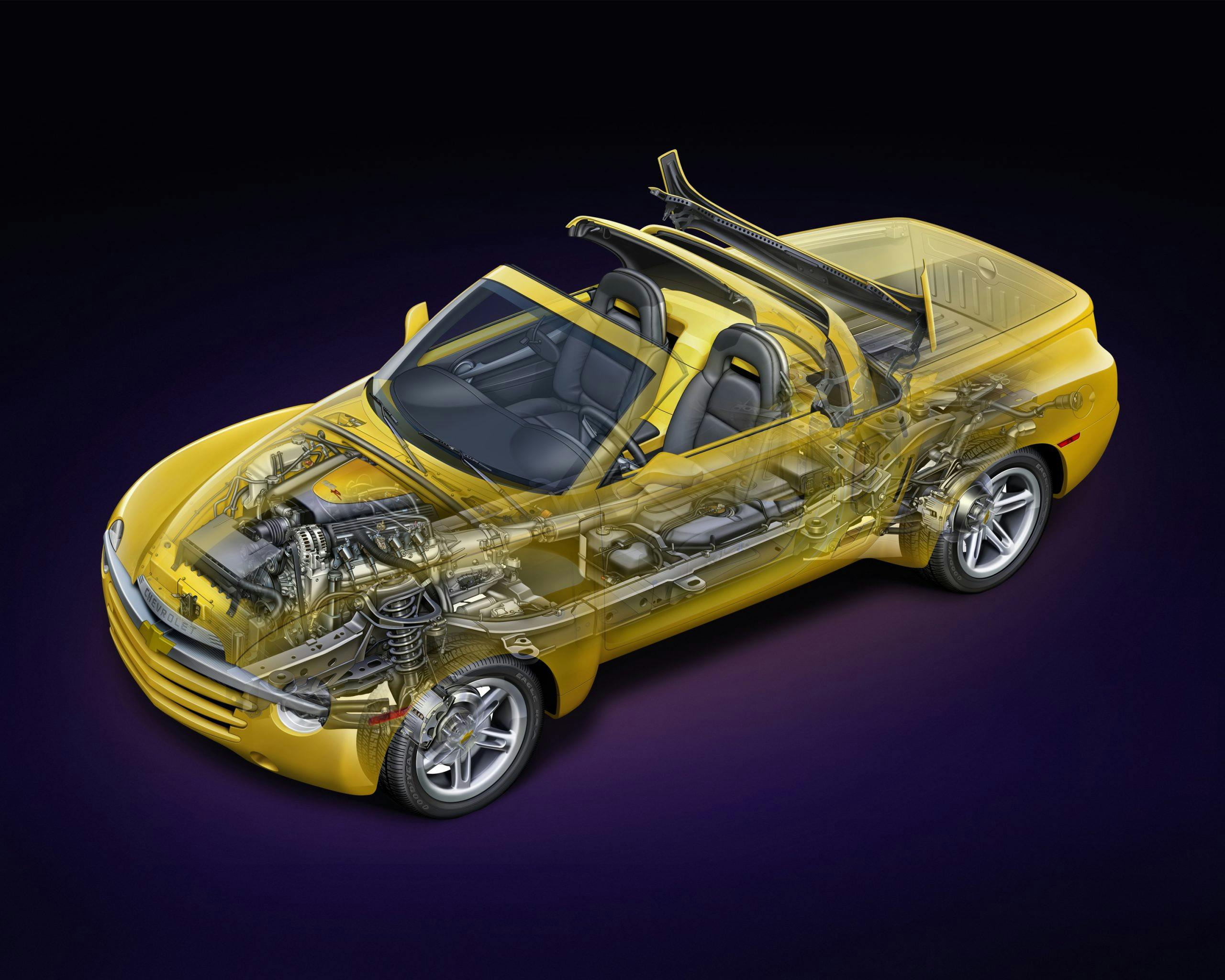
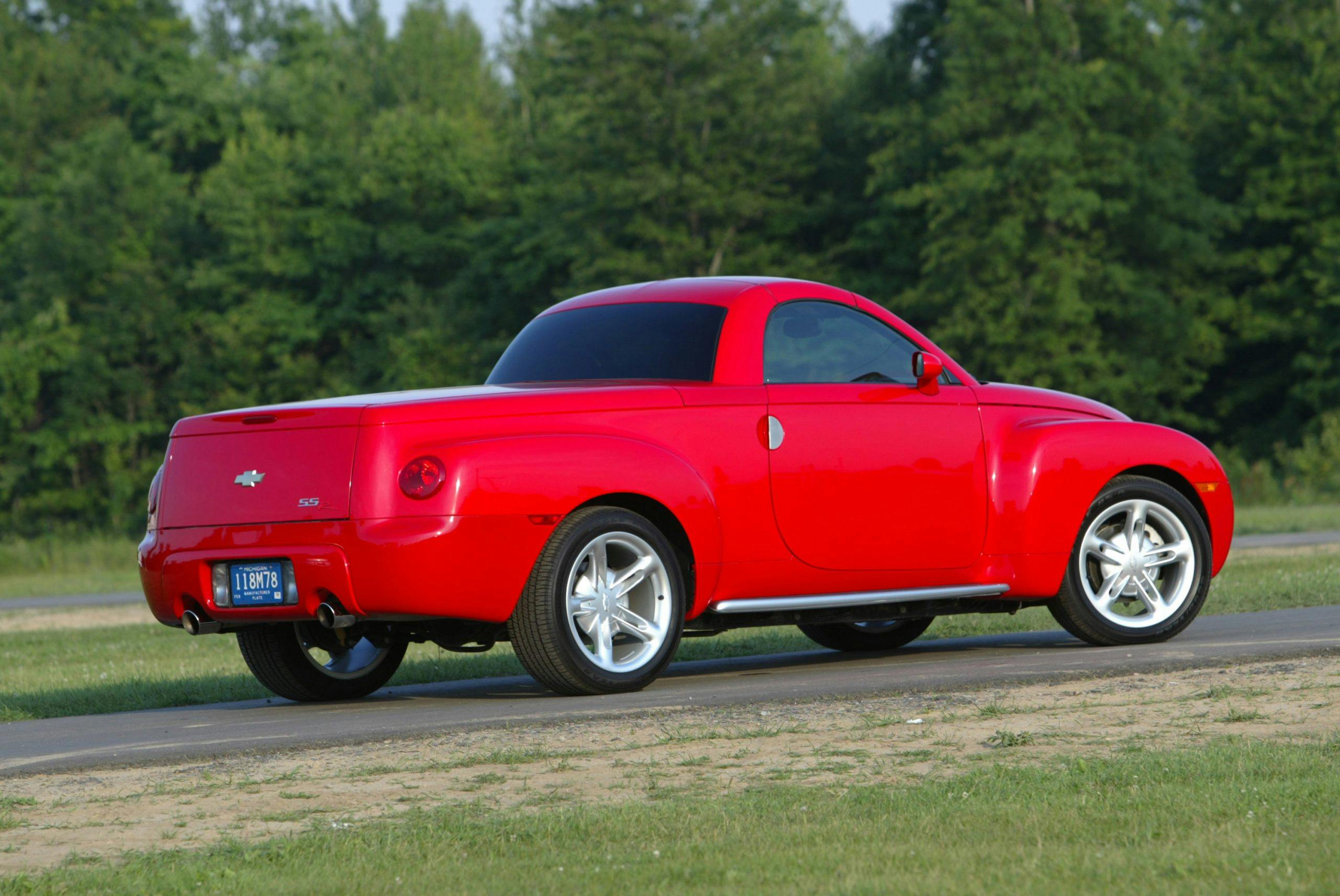
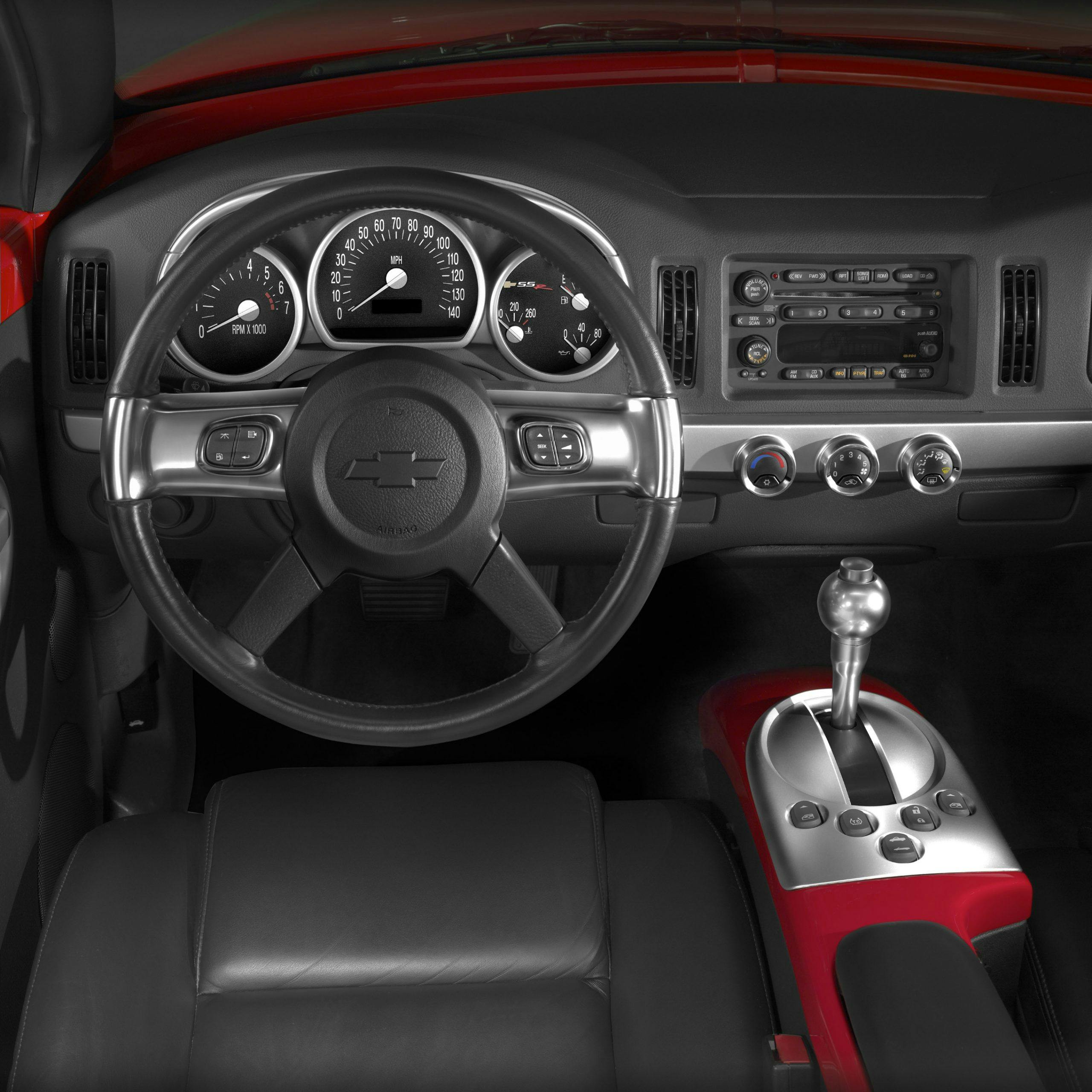
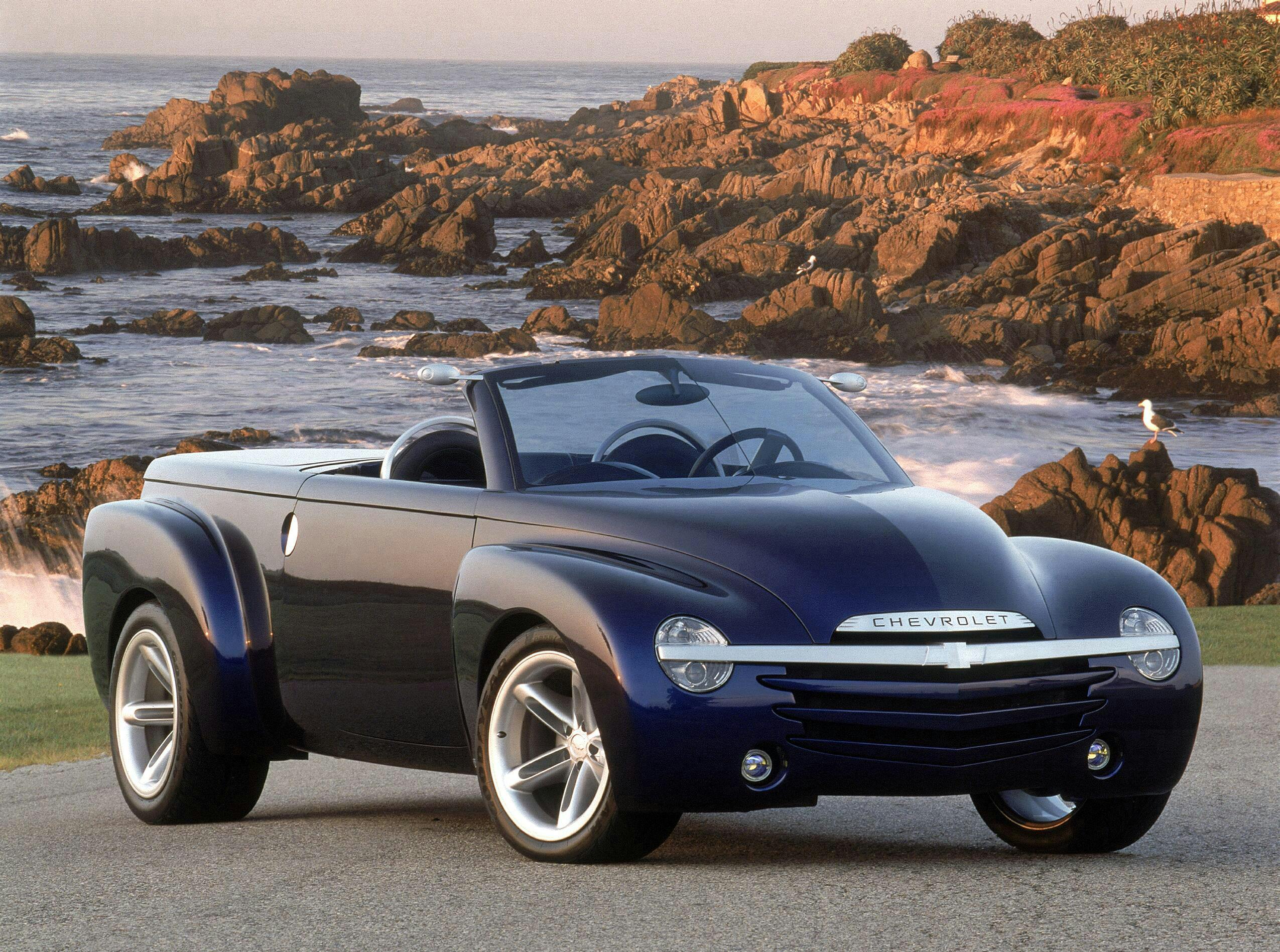

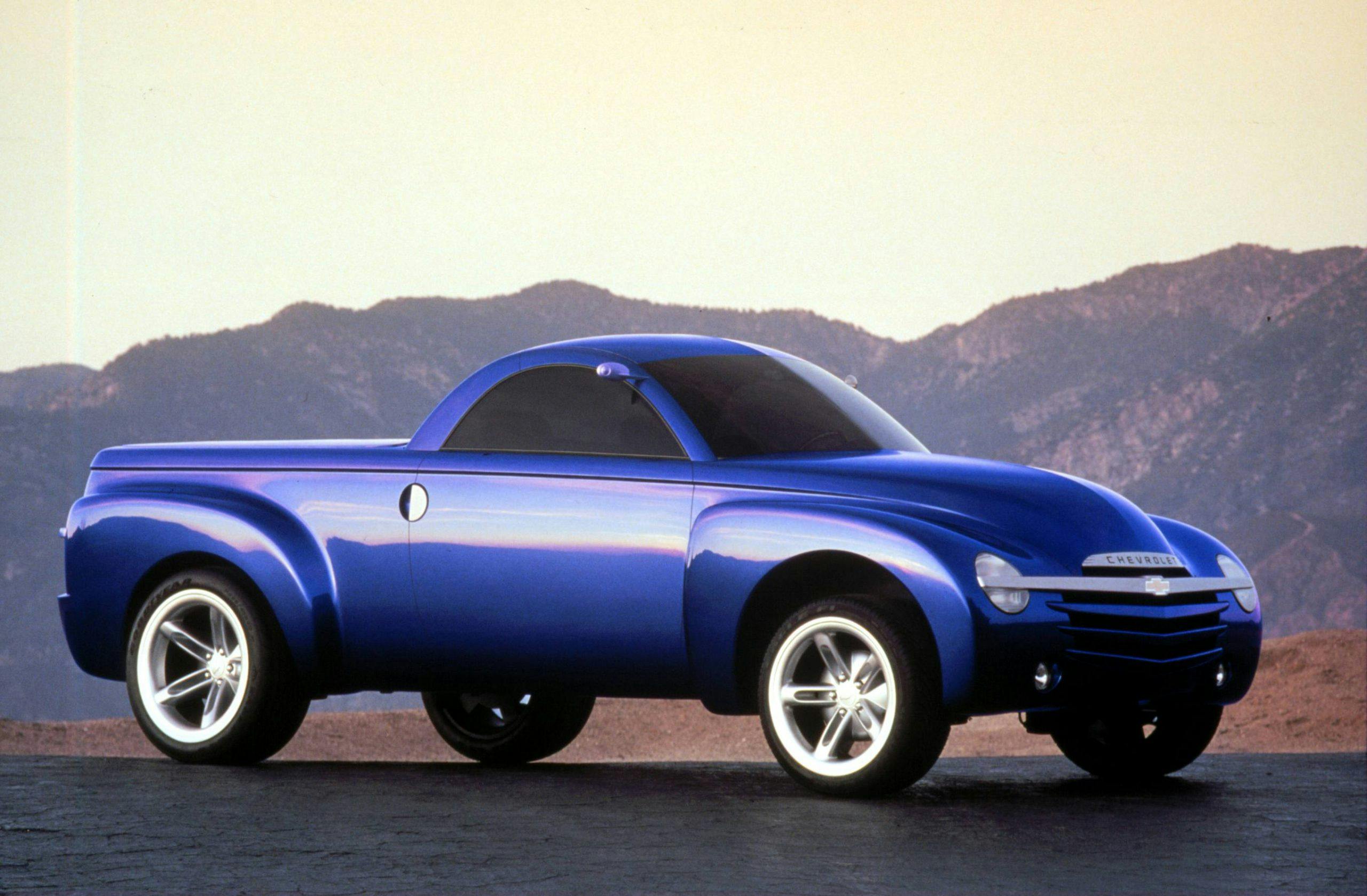
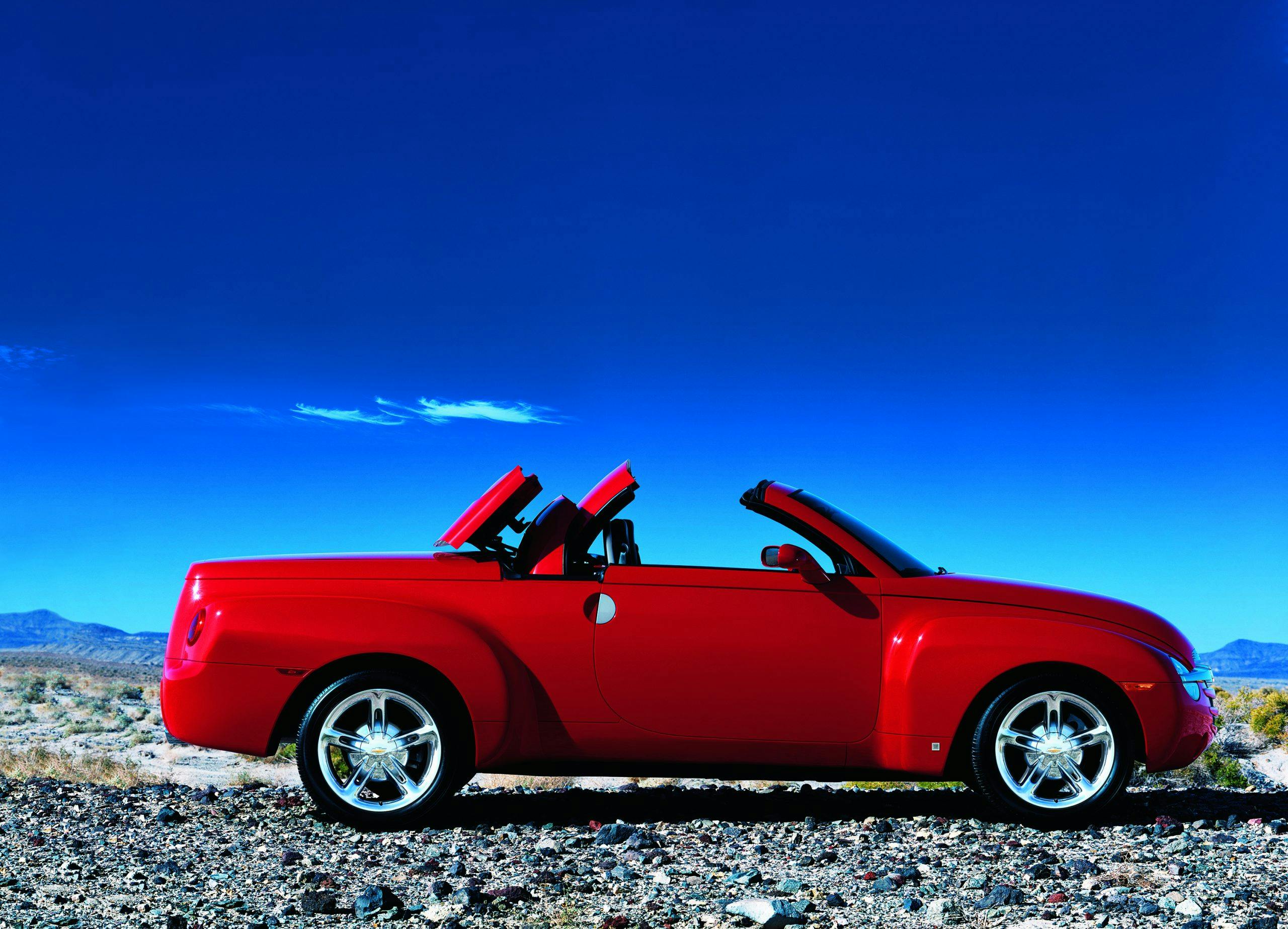
















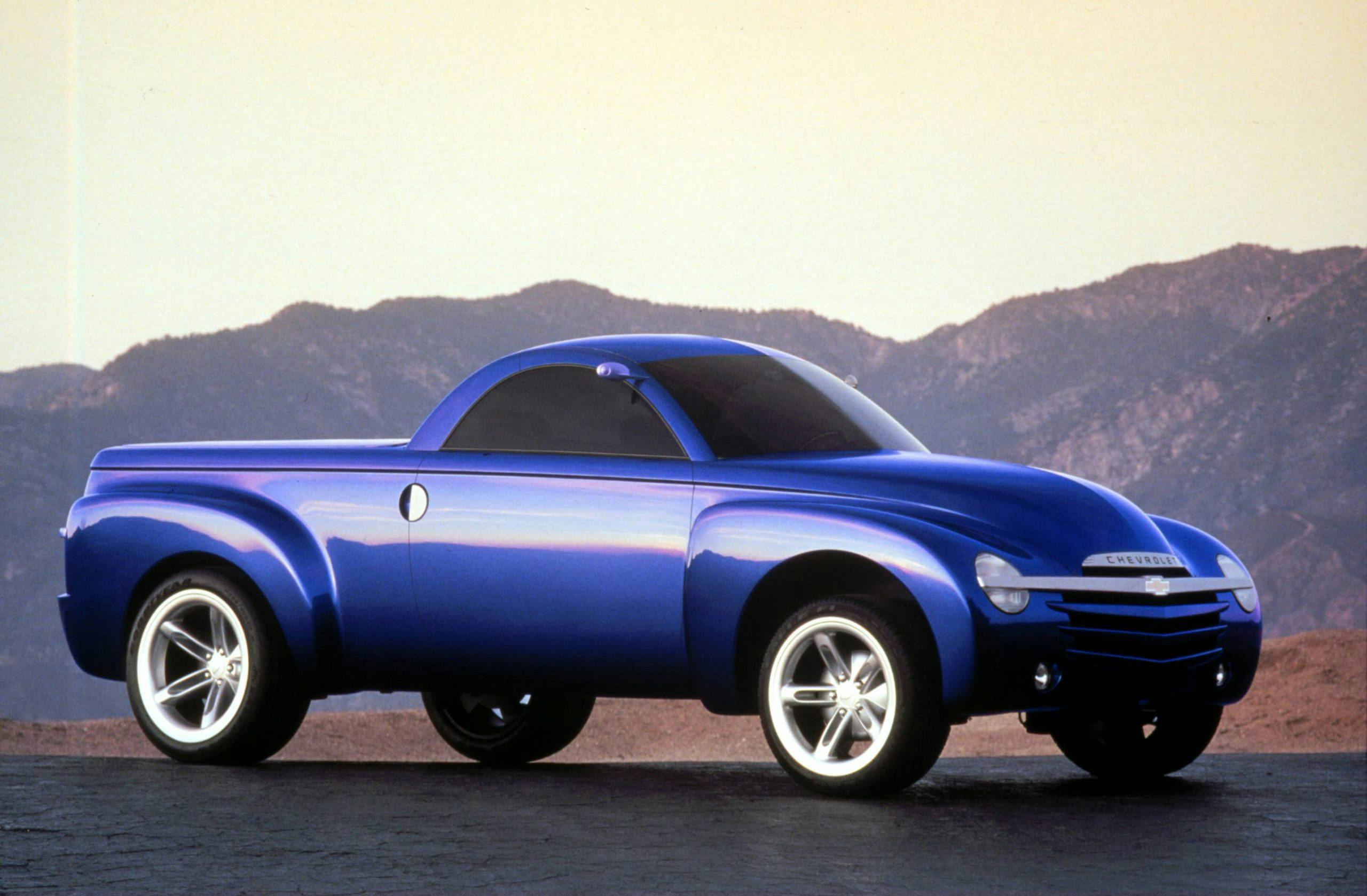



My grandmother passed away in 2004. In the limo from the funeral service to the burial, we passed an SSR on the street. It was the somberest of moments, but the visage of the SSR was so shocking that it caused our erstwhile formal and dignified limo driver to exclaim “what the hell is that grasshopper looking thing?” That brought much needed levity to me and my car loving family, so I’ll always appreciate the SSR for at least that.
To each his own.
“Too slow, grasshopper.”
You guys at Hagerty do a thorough job in your articles engaging to car enthusiasts, thanks
I’m looking for a used one.
Give me a price
Look for an average of 20k and up.
I was the high bidder at $19,500 for my ‘04.
The following model year will likely fetch more due to the introduction of the higher hp Corvette power plant.